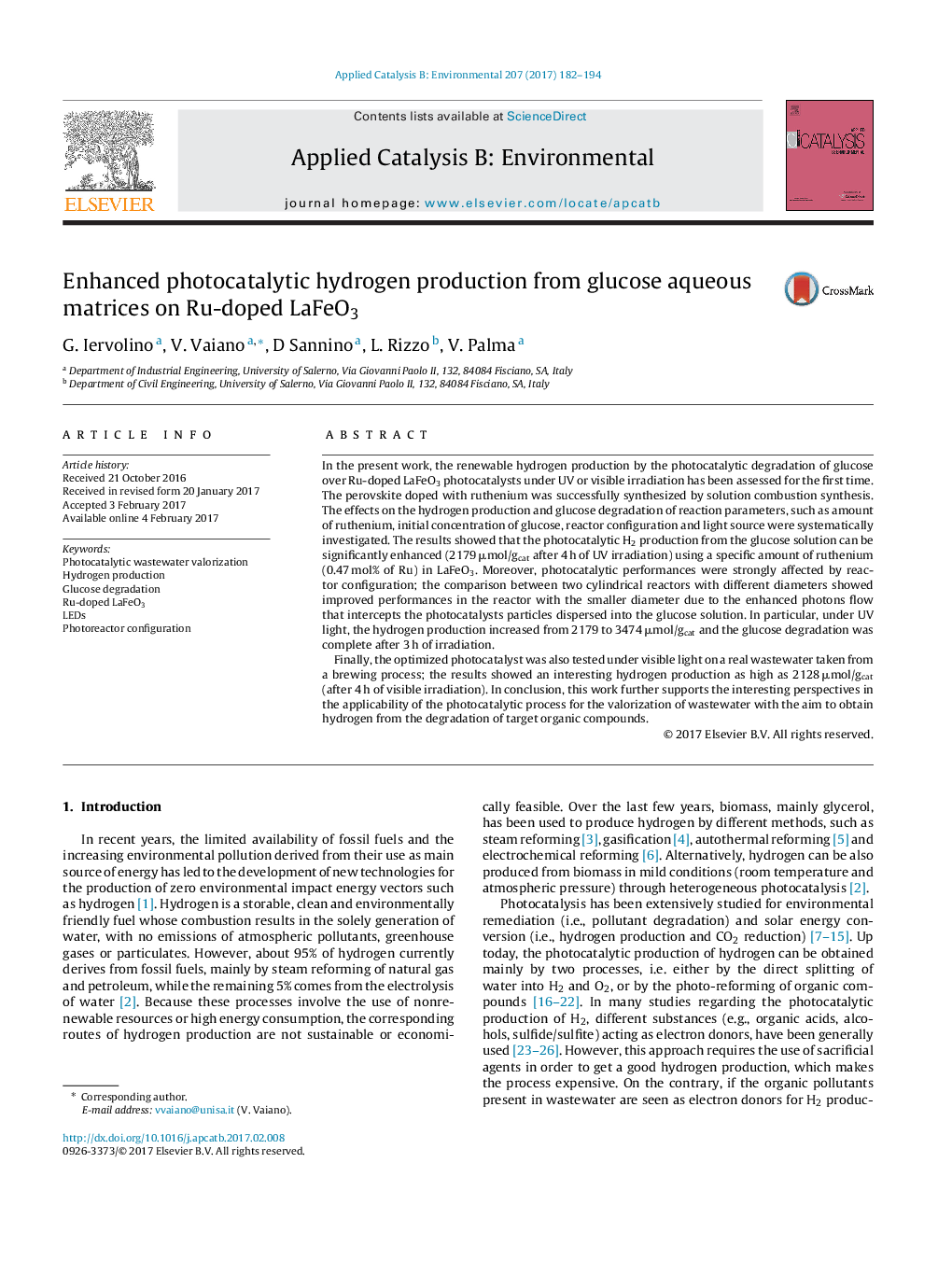| Article ID | Journal | Published Year | Pages | File Type |
|---|---|---|---|---|
| 6454061 | Applied Catalysis B: Environmental | 2017 | 13 Pages |
â¢Enhanced H2 production from glucose on Ru-doped LaFeO3 under UV or visible light.â¢The optimal Ru loading was found to be 0.47 mol%.â¢The photoreactor configuration strongly affects the photocatalytic performances.â¢Good photocatalytic performances also for the treatment of a real wastewater.
In the present work, the renewable hydrogen production by the photocatalytic degradation of glucose over Ru-doped LaFeO3 photocatalysts under UV or visible irradiation has been assessed for the first time. The perovskite doped with ruthenium was successfully synthesized by solution combustion synthesis. The effects on the hydrogen production and glucose degradation of reaction parameters, such as amount of ruthenium, initial concentration of glucose, reactor configuration and light source were systematically investigated. The results showed that the photocatalytic H2 production from the glucose solution can be significantly enhanced (2179 μmol/gcat after 4 h of UV irradiation) using a specific amount of ruthenium (0.47 mol% of Ru) in LaFeO3. Moreover, photocatalytic performances were strongly affected by reactor configuration; the comparison between two cylindrical reactors with different diameters showed improved performances in the reactor with the smaller diameter due to the enhanced photons flow that intercepts the photocatalysts particles dispersed into the glucose solution. In particular, under UV light, the hydrogen production increased from 2179 to 3474 μmol/gcat and the glucose degradation was complete after 3 h of irradiation.Finally, the optimized photocatalyst was also tested under visible light on a real wastewater taken from a brewing process; the results showed an interesting hydrogen production as high as 2128 μmol/gcat (after 4 h of visible irradiation). In conclusion, this work further supports the interesting perspectives in the applicability of the photocatalytic process for the valorization of wastewater with the aim to obtain hydrogen from the degradation of target organic compounds.
Graphical abstractDownload high-res image (115KB)Download full-size image
